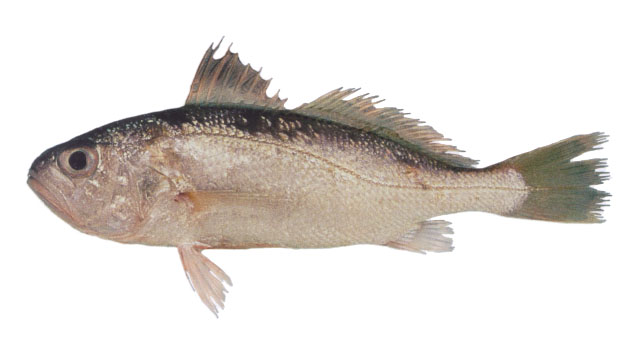| Sciaenidae (Drums or croakers) |
| 30 cm SL (male/unsexed) |
|
demersal; marine; depth range - 60 m |
| Indo-West Pacific: Persian Gulf to Taiwan and south through the Philippines and Borneo to about the southern tip of Java. |
|
Dorsal spines (total): 10-11; Dorsal soft rays (total): 22-24; Anal spines: 2-2; Anal soft rays: 7-7. Mental pores in 2 pairs, both small, the first pair at front of chin, separated by symphysis. Gill rakers slender, as long as gill filaments at angle of arch, 9-12 on lower limb. Dorsal fin with 22-24 soft rays. Second anal spine short, slender, 22-36 % of head length. Caudal fin truncate. Scales cycloid (smooth) on head and flanks. Swim bladder carrot-shaped, with 17-22 pairs of fan-like appendages along its sides, the first not entering head. Sagitta (large earstone) with a tadpole-shaped impression, the tail of which is hockey-stick-shaped. Nape with a diffused dusky blotch. |
| Occurs in inshore waters. Feeds on small crustaceans, benthic worms and small fishes. Marketed fresh and dried salted (Ref. 9772). |
|
Least Concern (LC); Date assessed: 01 July 2016 Ref. (130435)
|
| harmless |
|
Known from Tha Chin river (Samut Sakhon), Rayong, Tachalom, Kui (Prachuap Khiri Khan), Si Racha (Chon Buri), Songhkla, Andaman Sea, and Gulf of Thailand (Ref. 37773). Also Ref. 9772, 52823. |
Source and more info: www.fishbase.org. For personal, classroom, and other internal use only. Not for publication.

